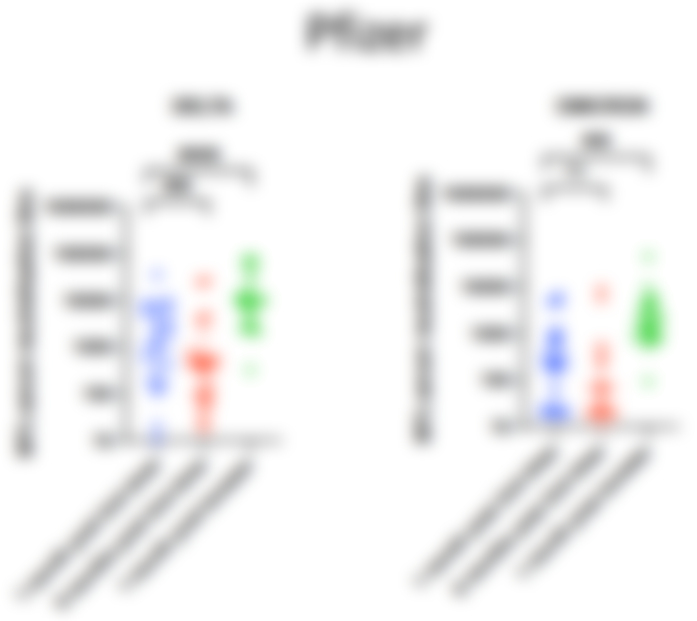Making Sense of the Omicron Variant's Transmissibility and Infectivity
Introduction
Earlier this month, I wrote about how governments around the world were largely overreacting to the Omicron variant of SARS-COV-2. Based on early data, the symptoms from the Omicron cases in South Africa were mild and the case fatality rate appeared to be significantly lower than previous variants. On top of that, the virus inherited an amino acid sequence from the common cold which might have contributed to its higher transmission rate and milder symptoms.
Now more time has passed, there is more information on the Omicron variant. The scientific literature that I read particularly looked at what cells the virus targets and the spike protein's binding efficiency.
Why is Omicron so Contagious?
On December 15, HKUMed published a short summary on its research into Omicron's infectivity. Its research revealed that unlike original and Delta variants which largely infect the lungs and less so in the bronchi, Omicron largely infects the bronchi and less so in the lungs. Relatively, Omicron has over 70x the infectivity over the other variants in the bronchi and 10x the infectivity in the lungs.

How is this data significant? In order to interpret the data, we need to look at the lung anatomy. The trachea goes down the neck and divides into two main bronchi, the left and right. The main bronchi will divide into lobar bronchi which correspond with the 2 lobes of the left lung and 3 lobes of the right lung. The lobar bronchi will further divide into smaller and smaller branches until we reach the aveoli. These are extremely small sacs wrapped with capillaries where red blood cells exchange oxygen and carbon dioxide.


Where the virus infects in the respiratory tract will determine the types and the severity of symptoms. The reason why the original and Delta variants were pretty serious was because they infected the lung tissue. When a SARS-COV-2 virus infects a lung cell, the cell will release cytokines to recruit white blood cells like macrophages and neutrophils. The problem is that as this happens, the blood vessels at the aveoli become more permeable which allows fluid to build up more easily. This will ultimately interfere with an individual's capacity to exchange oxygen and carbon dioxide.

In contrast, the Omicron variant mostly resides in the bronchi or the upper respiratory tract. While fluid will still build up as a result of a cytokine storm, it is easier to expel the fluid via coughing. As a result, health outcomes like pulmonary edema (i.e. swelling in the lungs) are less likely. Of course, this also makes the virus more transmissible as the cough droplets can potentially spread the pathogen to other individuals.
Omicron's Spike Protein Binding Efficiency
A virus infects a cell through hijacking its ribosomes to synthesize the proteins that make up the capsule and spike proteins. However, all of that is moot if the virus cannot (1) reliably bind to the cell receptor for entry and (2) cleave from the host cell to exit. Failure to bind to the receptor means the virus cannot release its genetic material for replication. If a virus cannot cleave from the host cells, then it cannot infect other cells.

Meng et al. (2021) observed the fusogenecity (i.e. the capacity of a virus to fuse with the host cell) and cleavage efficiency of the Omicron variant. The research found that the Omicron variant exhibited lower infectivity in the lung tissue and slightly higher infectivity in lung epithelial cells (i.e. the upper respiratory tract). This mostly coincides with what HKUMed observed.


The study used green fluorescent protein (GFP) to detect and measure the cell fusion activity of the original, Delta, and Omicron strains. If the viruses can reliably fuse with host cells, then the amount of GFP should be high. If the spike proteins have poor binding efficiency, however, then the host cells will yield less GFP. Results revealed that over a 16 hour period, the Omicron variant yielded substantially less GFP than the original and Delta variants, suggesting poor binding efficiency.


On top of the poorer fusogenecity, the study concluded that the Omicron variant's "observed cleavage efficiency is lower than for wild type Wuhan-1
D614G and Delta". Both of these factors suggest that the Omicron is less efficient at invading host cells and proliferating to other host cells than other variants.
The study also looked at the neutralization efficiency against the Omicron variant with and without a booster vaccine. Results showed little difference in neutralization 1 month versus 6 months post-2nd dose. In comparison, neutralization rose on average post-booster.

Closing Thoughts
After more data has come in, it looks like while Omicron variant is more contagious than the Delta variant, it is not as severe as the latter or the original strain. The higher transmissibility is the result of Omicron having a higher affinity for the upper respiratory tract. However, because the strain has a significantly lower affinity for lung cells than previous variants, severe symptoms such as pulmonary edema are more unlikely.
As shown by Meng et al. (2021), the Omicron variant is less efficient at injecting its genetic material into the host cells it is attempting to infect. On top of that, it is worse at cleaving from the host cells than previous strains, meaning it cannot proliferate as reliably. This double-whammy of inefficiency may ultimately explain the milder symptoms and lower case fatality rate.










I'm very glad South Africa has come to their senses and stopped the quarantine for contacts, and also stopped people testing under most circumstances who are asymptomatic. We need to go forward and get on with our lives now.